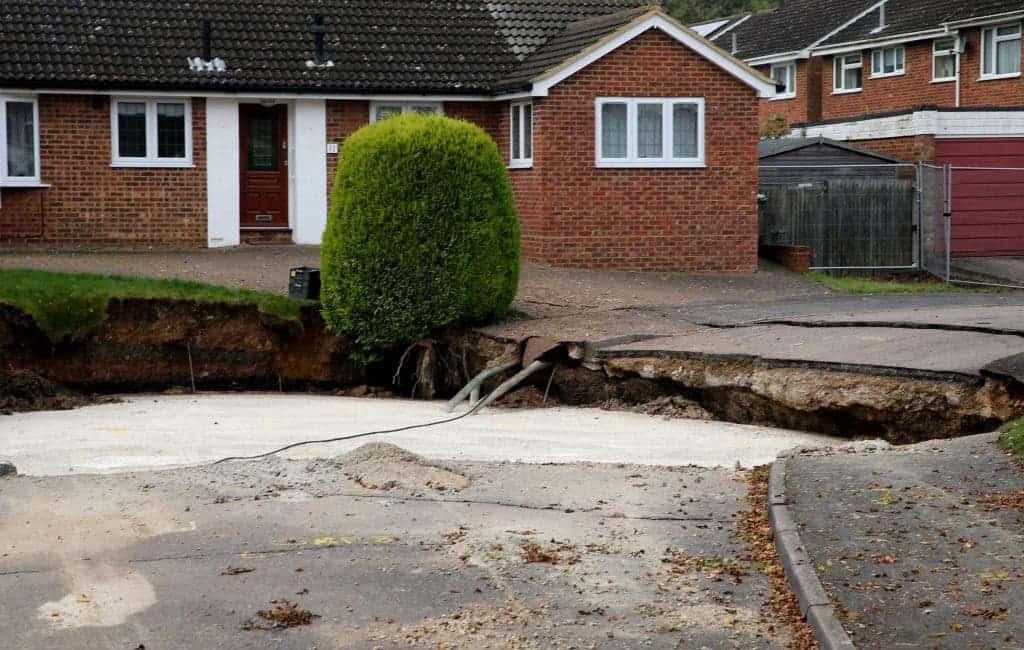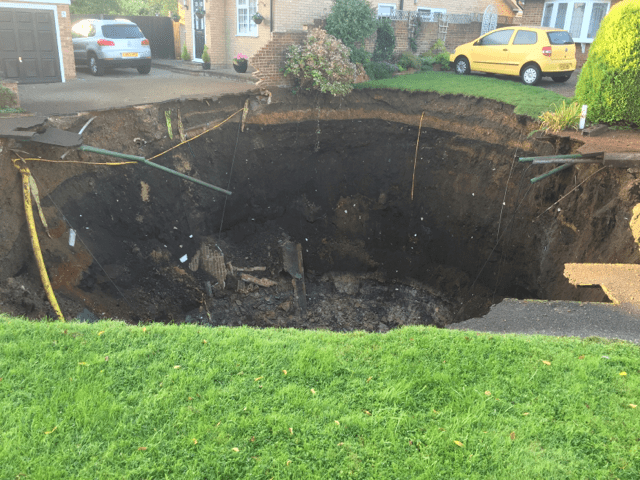People in St. Albans, Hertfordshire, England, are in a state of alert after a massive sinkhole opened in the middle of the street, and engineers warn that another one, even larger, might appear.

Sinkholes are natural depressions (or holes) in the surface of the Earth’s surface, (usually) caused by karst processes. Karst processes occur when the bedrocks are soluble – in other words, in 99% of all cases, in carbonate rocks (like limestone or dolomite) or evaporitic rocks (like gypsum or anhydrite). For this case, the collapse occurred within the boundary of a clay pit that had been excavated in the 19th century and backfilled with waste from the area.
“Chalk excavation in the bedrock beneath the clay pit is the most likely explanation for the cause of the collapse,” it added. “A number of anomalies have been identified, one of which appears to have characteristics similar to that which resulted in the sinkhole. Initial modelling suggests this could be larger than the existing collapse, possibly by up to three times. Further investigation will be necessary.”

A geophysical gravimetric survey was already carried out in the area, and initial data indicate a void two-three times larger than the existing sinkhole. Gravimetric surveys rely on very small gravitational contrasts – for example between a void, and the surrounding material.
The city council is still weighing their options.
“We know that further investigation is needed, possibly intrusive investigations, and are working with householders and their insurers and loss adjusters on the best way forward,” the council said.
This is yet another reminder that if you live in the “right” geological context, sinkholes can happen, and they often happen suddenly and unexpectedly. Get some geological information if you live in one of these areas, and pay extra attention if you’re building something.


